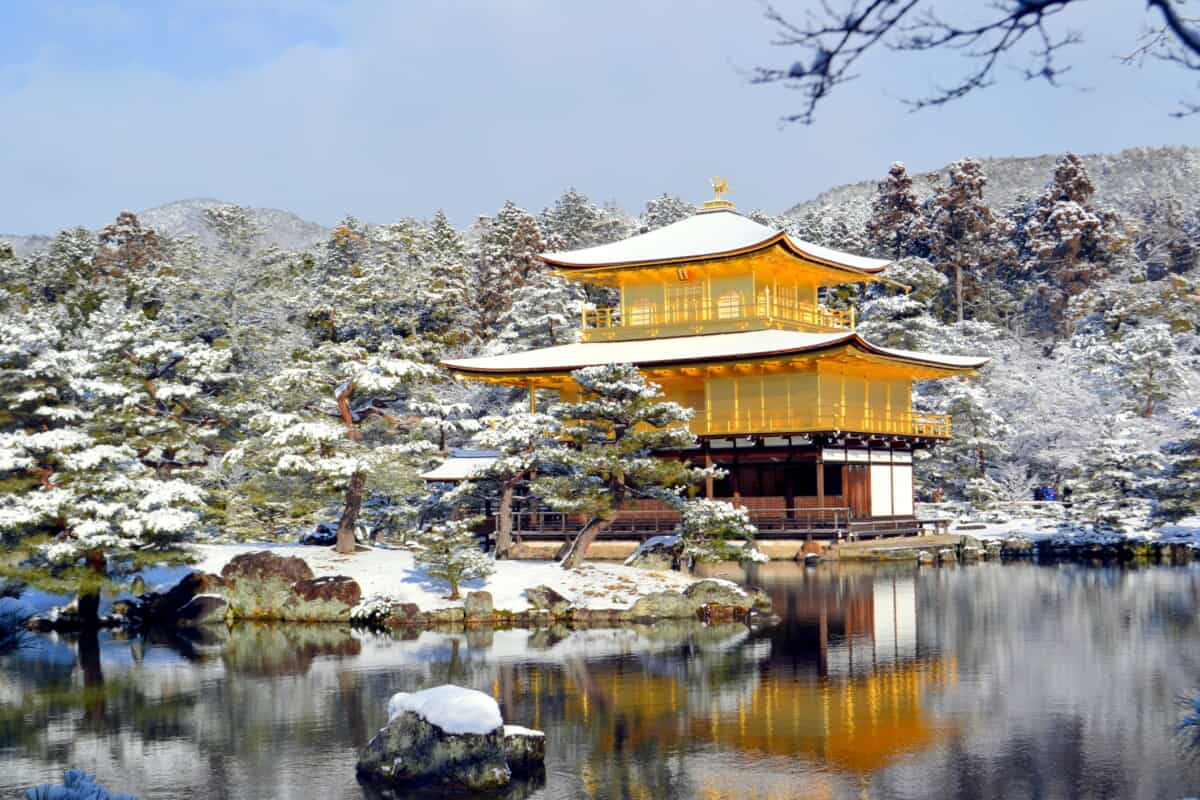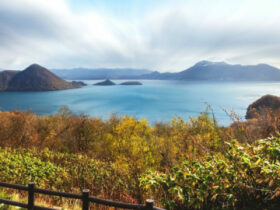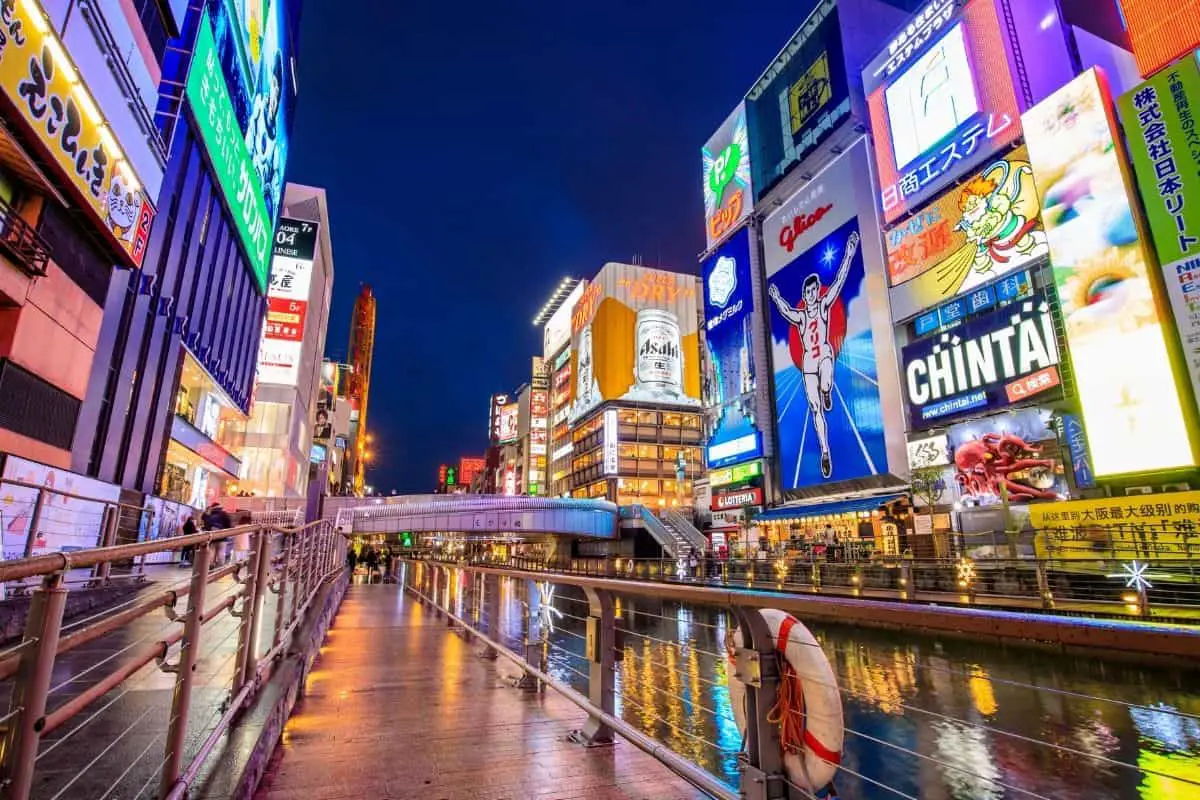Kyoto is a Japanese city famed for its lush gardens, beautiful cherry blossoms, steadfast Buddhist temples, and traditional geisha ceremonies. Located in the Kansai region on the island of Honshu, it experiences a temperate humid climate. Kyoto’s winters are usually cold, and when snow does fall, it is usually fleeting and rarely lingers on the ground.
Kyoto is one of Japan’s most beautiful and ancient cities and it is a must-see if you’re planning to visit the country in the near future.
With spectacular scenic views, quaint mountain villages, and ancient temples and shrines, Kyoto can be a winter wonderland during the winter months.
This article details all you need to know about Kyoto’s winter weather, the likelihood that you’ll experience snowfall while you’re there, and how and where to enjoy the city in the snow.
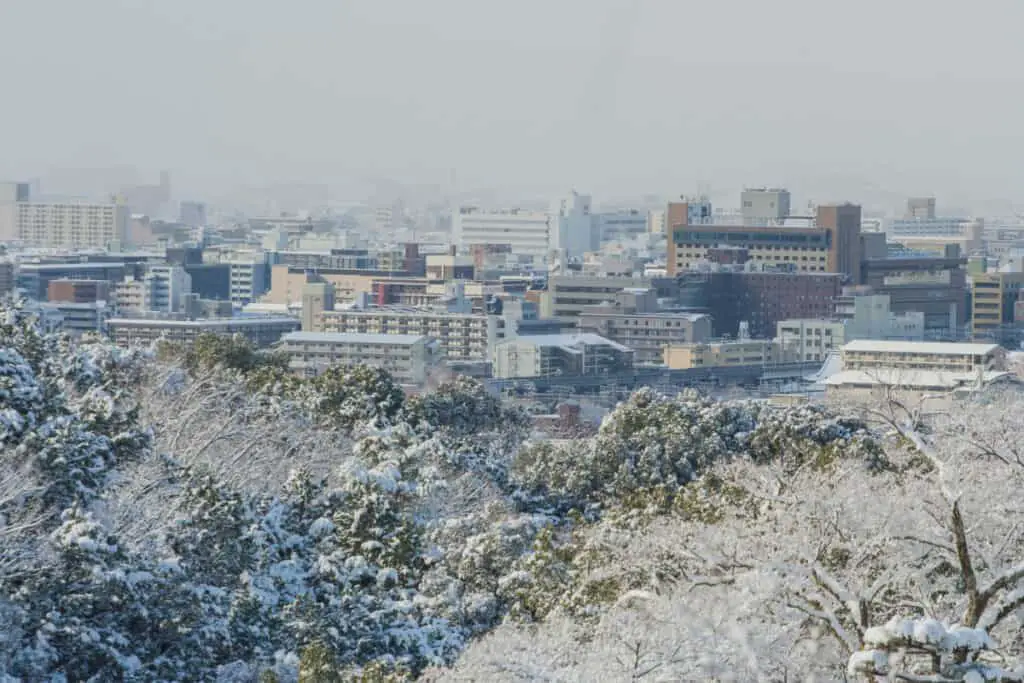
Where is Kyoto?
Kyoto is the capital city of Kyoto Prefecture in Japan, right in the heart of the Kansai region on the island of Honshu.
The city is nestled in a valley within the Yamashiro Basin. This is a picturesque and rugged landscape dominated by the mountains of Higashiyama, Kitayama, and Nishiyama.
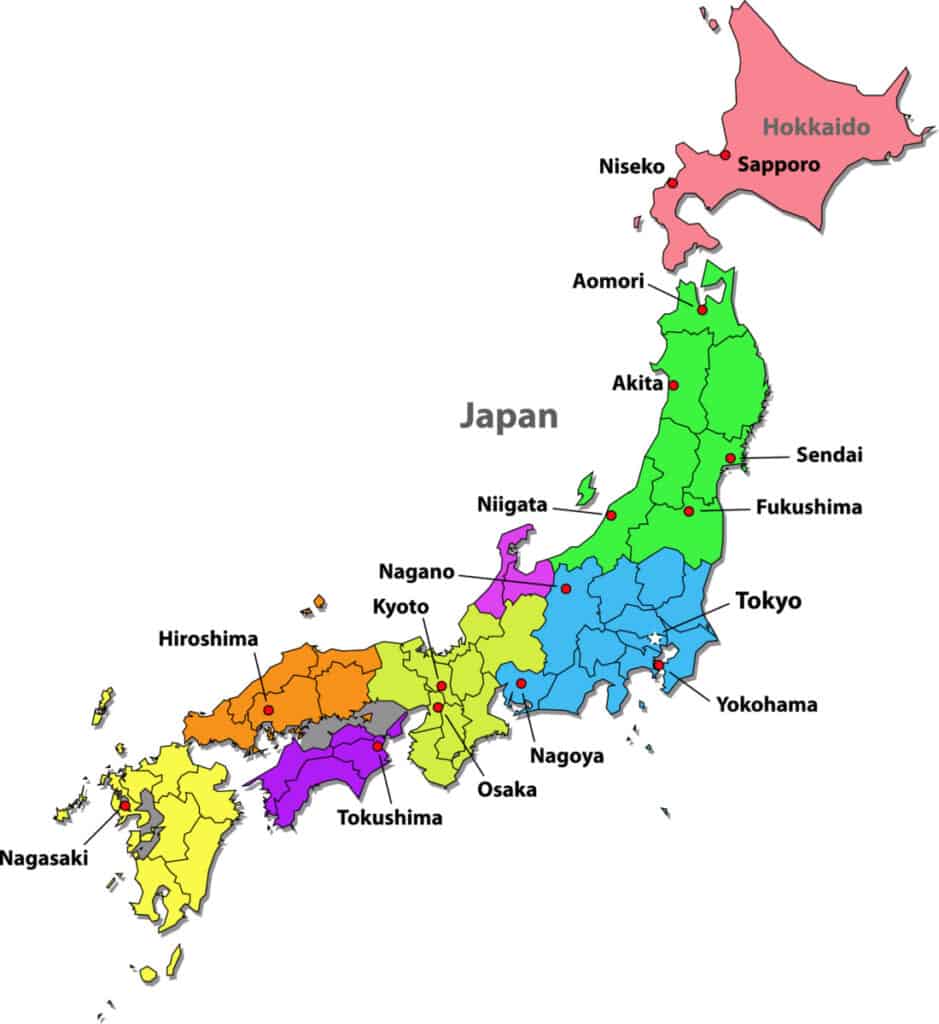
What is Kyoto’s Weather Like?
With its inland position and unique local geography, Kyoto usually experiences humid, hot summers and cool to mild winters.
Officially, its type of weather is known as a humid temperate climate. With hot summers and cool winters, this type of weather is usually found on the southeast side of all continents, generally between the latitudes of 25 degrees and 40 degrees. Kyoto fits nicely within this profile.
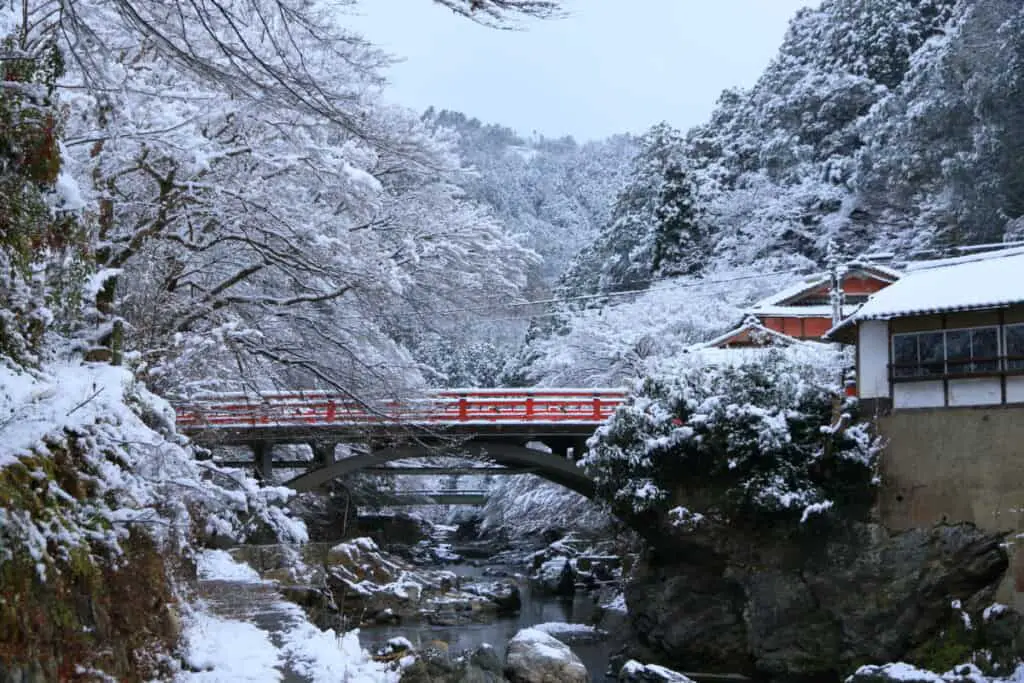
Kyoto enjoys temperature variations across all four seasons. While the average summer temperature in August is 83.3o Fahrenheit (28.5o Celsius), the winters can get relatively cold, down to an average daily low of 10.6o Fahrenheit (-11.9o Celsius).
Most of Kyoto’s rain falls during the rainy season, from the middle of June to the end of July. Once summer wanes, Kyoto, along with most of the Pacific coast and central areas of Japan, is prone to typhoons during September and October.
What is the Snow Like in Kyoto?
Kyoto experiences mild snowfalls most years, and they generally occur from as early as mid-December to the middle of March.
Kyoto’s snowfalls are by no means heavy and the snow will usually dissolve before it has the chance to form a layer on the ground. On average, Kyoto experiences just 5.9 inches (15 centimeters) for the whole year.
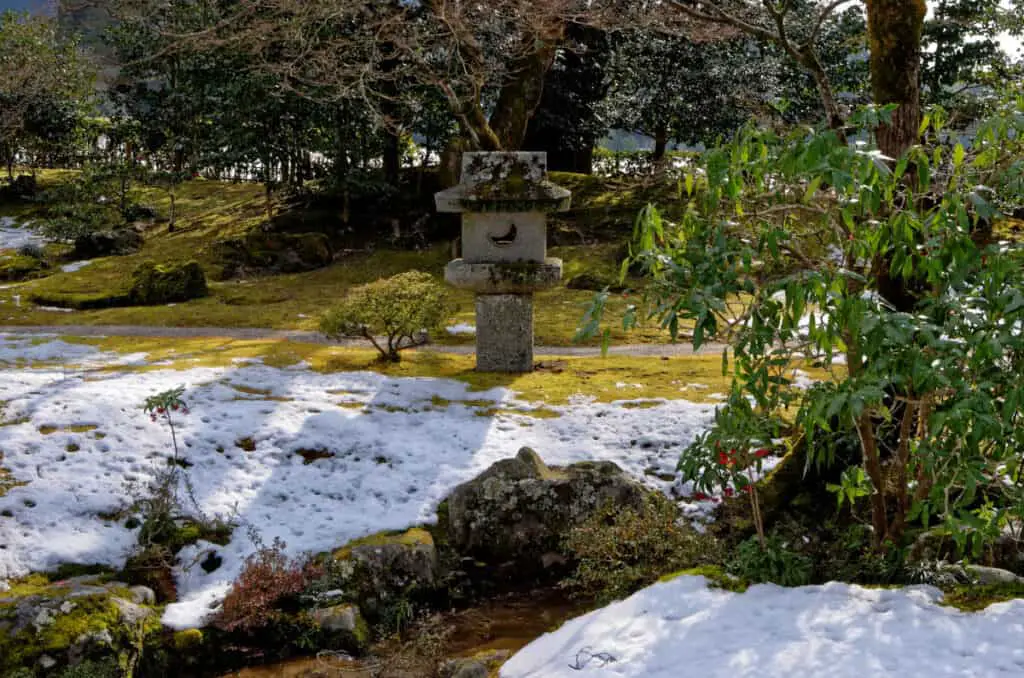
Generally, the higher mountainous regions surrounding the city experiences heavier snowfalls than the city proper in the valley below.
For example, the nearby mountains of Kitayama, Atago-san, and Hiei-zan can sometimes be covered in snow for weeks at a time in winter, even when the city below remains untouched with even a dusting of snow.
Enjoying the Snow in Kyoto
If you’re lucky enough to be visiting Kyoto when it gets a rare heavy snowfall, there are a number of experiences that will elevate your visit from fantastic to superb. Here is a couple of the best:
Experience the cool serenity at a Buddhist temple
Your first step towards enjoying this rare experience is to make your way straight to the nearest Buddhist Zen temple.
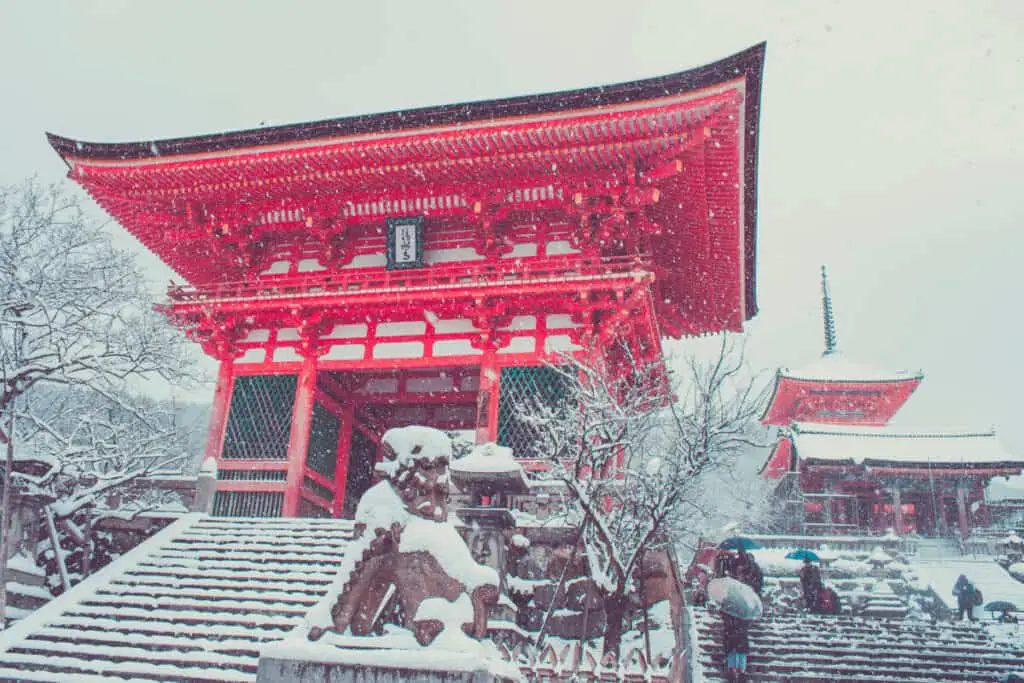
Some of Kyoto’s most beautiful are the Tofuku-ji Temple, Daitoku-ji Temple (and all its sub-temples), Ginkaku-ji Temple, and Nanzen-ji Temple.
Here, you can experience the delightful sight of snow falling and settling on a karesansui niwI, a traditional raked gravel Zen garden.
‘Take a trip to winter’ in Kyoto’s mountains
Kyoto’s unique landscape and topography are a draw for snow-loving tourists if conditions are right. Surrounded by mountainous regions, it’s a short trip on the Eizan-dentetsu train from the center of the city up into the mountains and to Kurama.
This tranquil rural village is the perfect place to enjoy a hike through the forest. Not only will you get to experience the natural beauty of Kyoto’s snowfall but, if you have the stamina, you can even make your way over the mountain to the neighboring village of Kibune.
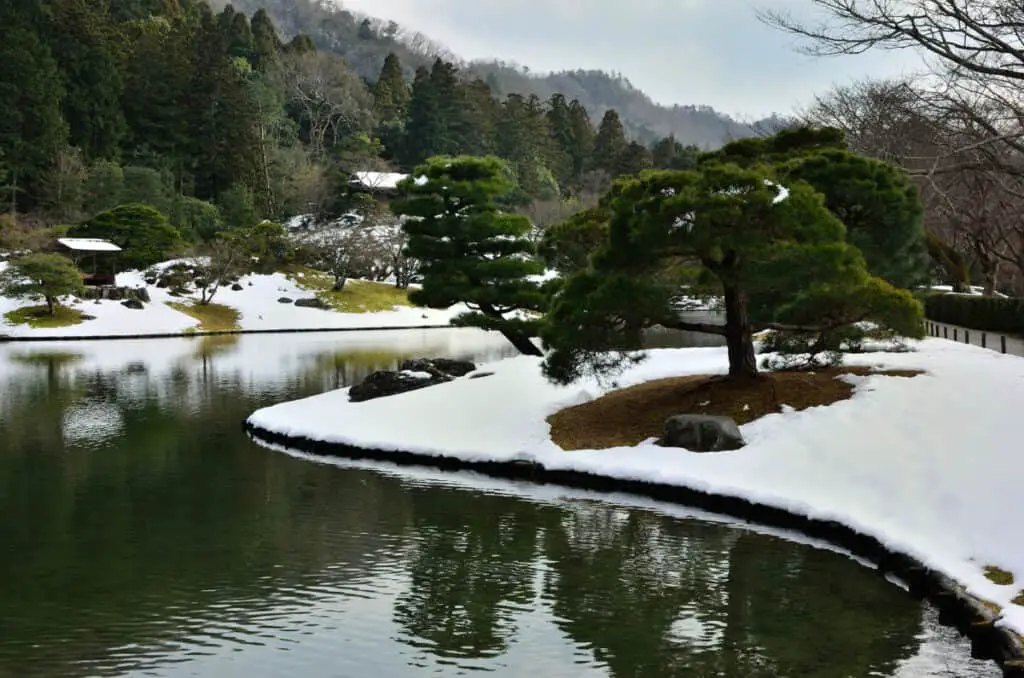
Kurama is also home to the temple of Kurama-dera and the small Shinto shrine on Mount Kurama called Yuki-jinja, which both offer spectacular views during a snowfall.
Just remember to take your snow-proof hiking boots!
Soak the cold away at an onsen (hot spring)
The village of Kurama boasts one of the best onsen in Kyoto. Enjoying the warmth and beauty of a hot spring is wonderful at the best of times. Just imagine the tranquility of soaking up a winter wonderland from the luxury of a hot spring!
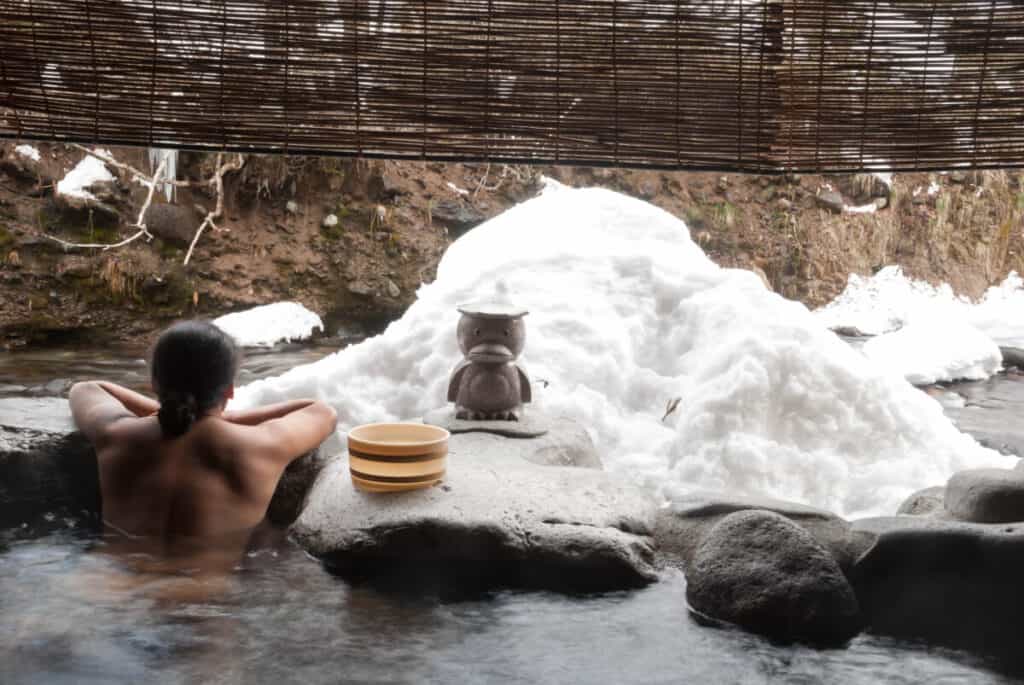
Spend a night nestled in the snow-capped mountains
To really experience what Kyoto has to offer during the snow, why not spend a night or two at the private retreat called Ugenta Ryokan?
Ugenta Ryokan Official Website
Nestled in the natural beauty of Kibune, it offers outdoor rooftop baths and a spectacular natural setting.
For those with a romantic nature, it’s the perfect place to treat yourself and your partner.
Enjoy the scenic beauty of one of Kyoto’s best lookouts
Kyoto has a wealth of winter sightseeing spots, from snowy landscapes to night-time illuminations. Here are some of the best:
1. Amanohashidate
This landmark is one of Japan’s most recognized scenic spots. Located in the northern part of Kyoto Prefecture, it overlooks the picturesque Sea of Japan. At around 30 miles (48 kilometers) from Kyoto, it’s an easy trip for such spectacular views.
Amanohashidate Official Website
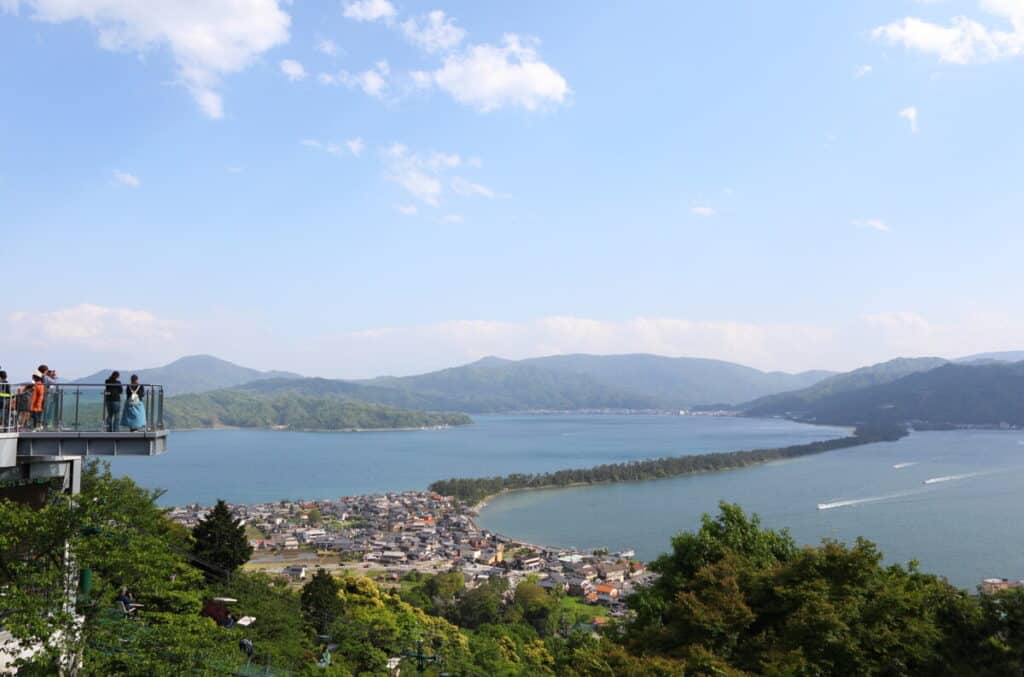
When the frost covers the pine needles that carpet the ground, it sparkles like a forest of diamonds!
And if you’re there to catch the sunrise, the frost melts to reveal the magical Hiryukan or ‘flying dragon’ view!
2. Kifune Shrine
Also known as Kyo-no-Okuzashiki, ‘Kyoto’s inner room’ in English, this shrine is the spiritual heart of the village of Kibune.
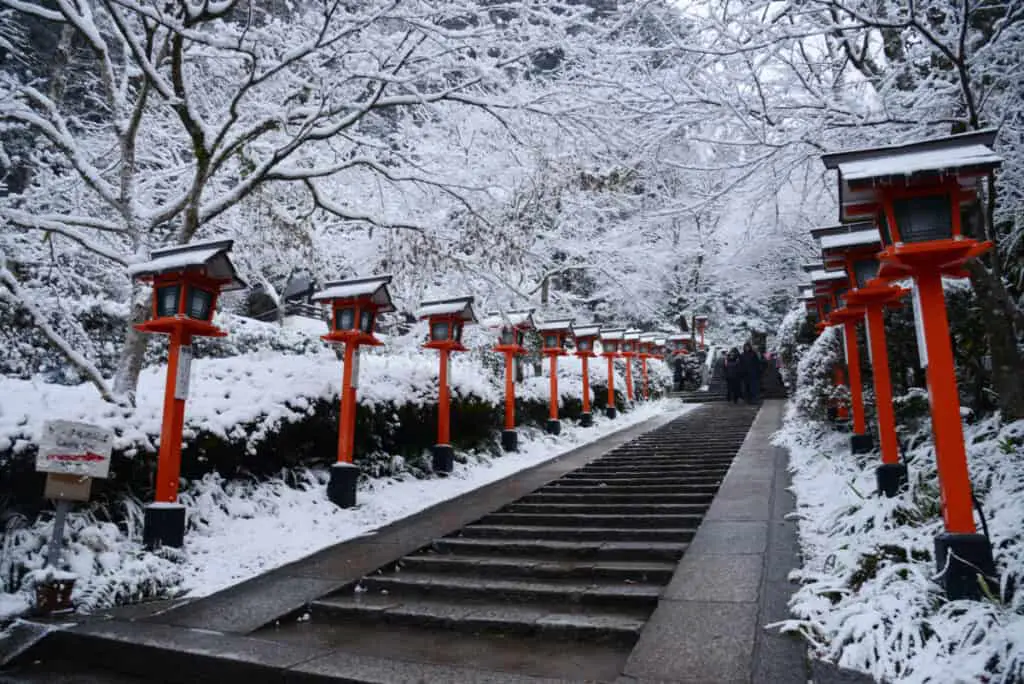
It is one of 500 such Kifune shrines in Japan that are strongly connected to water, especially when it is in the form of rain and seawater. It is also a popular shrine for couples wishing to get married.
When it snows, the village is illuminated with gorgeous yellow Kasuga stone lanterns to provide visitors with a breathtaking visual experience.

